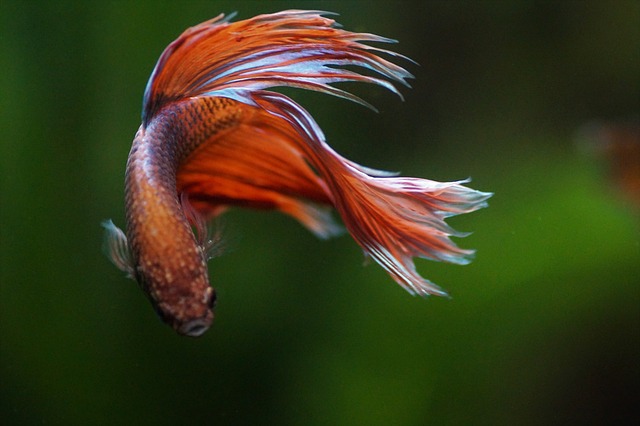Breeding Betta fish (Betta splendens) can be a fascinating and rewarding experience for fish enthusiasts. These vibrant and beautiful fish are known for their long, flowing fins and brilliant colors. Breeding Betta fish requires careful planning, proper tank setup, and attentive care throughout the breeding process. In this article, we will explore the step-by-step process of breeding Betta fish, from selecting compatible pairs to caring for the fry.
Pair Selection:
To begin the breeding process, it’s crucial to select compatible breeding pairs. Choose healthy and mature Betta fish that exhibit vibrant colors, long fins, and overall good physical condition. It’s advisable to keep separate male and female Betta fish in separate tanks for a few weeks to ensure they are in prime breeding condition. Look for signs of readiness, such as vertical breeding stripes on the female and the male’s development of a bubble nest.
Breeding Tank Setup:
Create a suitable breeding tank to provide an optimal environment for successful breeding. A tank with a capacity of 10 to 20 gallons is recommended to accommodate the breeding pair comfortably. Include ample hiding places such as live plants, floating plants, and small caves to simulate their natural habitat. Maintain a water temperature of 78 to 80 degrees Fahrenheit (25 to 27 degrees Celsius) and a pH level of 6.5 to 7.0.
Conditioning and Introduction:
To increase the chances of successful breeding, it’s important to condition the breeding pair before introducing them. Feed them a varied and nutritious diet, including high-quality live or frozen foods, to enhance their health and vitality. Gradually introduce the male and female Betta fish into the breeding tank, allowing them to acclimate to the environment.
Spawning Ritual:
Male Betta fish are responsible for building bubble nests to support the spawning process. They create these nests by blowing bubbles at the water’s surface using their saliva. Once the male is ready, he will begin courting the female, displaying vibrant colors and flaring his fins. The male will then lead the female to the bubble nest, wrapping his body around her to initiate spawning. The eggs are released by the female and fertilized by the male, after which the male collects the eggs and places them into the bubble nest.
Removing the Female:
After spawning is complete, it is crucial to remove the female Betta fish from the breeding tank. The male is solely responsible for caring for the eggs and fry. Keeping the female in the tank may result in aggression or potential harm to the eggs or fry. Place the female in a separate tank with suitable conditions for her to recover.
Caring for the Eggs and Fry:
The male Betta fish diligently tends to the bubble nest, ensuring that the eggs receive optimal care. He will repair any damaged bubbles and retrieve any eggs that fall. It’s essential to maintain stable water conditions, regular water changes, and a consistent temperature to support the growth and development of the eggs. After hatching, the fry will remain in the bubble nest until they become free-swimming. At this stage, feed the fry infusoria or commercially available liquid fry food, gradually transitioning to finely crushed flakes or baby brine shrimp as they grow.
Growth and Separation:
As the fry continues to grow, it’s important to provide them with a suitable rearing environment. A separate tank or divider within the main tank can be used to prevent aggression among the fry. Maintain optimal water quality and temperature to support their growth. As the fry mature, monitor their development and separate them based on their size and aggression levels to avoid any harm.

